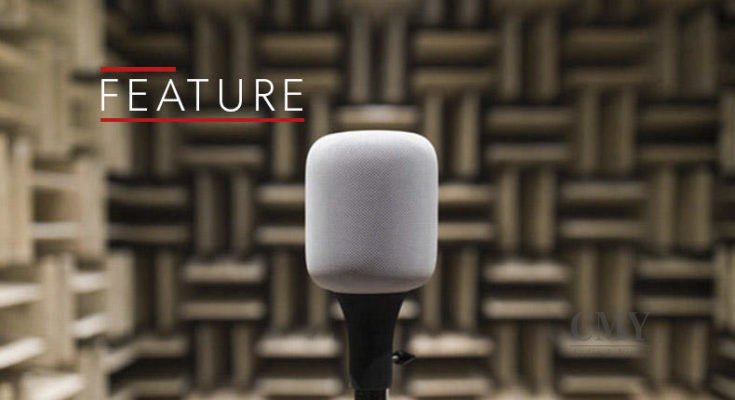News
How HomePod was made: a tale of obsession from inside Apple’s audio labs
(Original author By Tom Parsons
When Apple invited us behind the scenes at HomePod Development HQ, we suspected the company was serious about sound quality. We didn’t realise just how preoccupied it had become.
We now know the Apple HomePod sounds great, but before its launch that was far from a given. The company had already had a stab at speakers in 2006, with the iPod Hi-Fi – a product that received a three-star verdict from this publication.
But right from the start there were signs the HomePod was a different proposition. Not only was Apple taking audio seriously, but the company also believed it was developing a product that genuinely sounded great.
An early sign came at the company’s annual WWDC event in June last year. Apple not only announced the HomePod, it offered What Hi-Fi? a demonstration of its sonic capabilities. Not just in isolation, either, but against a number of rivals – including the Sonos Play:1, one of the best sounding wireless speakers around.
The early verdict was that Apple was onto something quite special. But a noisy exhibition floor is never the best place to appraise a speaker – more telling was that Apple was confident enough to invite the comparisons.
Then came an invitation to travel to Apple’s home in Cupertino to meet the team and tour the labs that birthed the HomePod, and to hear it before it hit shops. That was a bold move: you don’t invite What Hi-Fi? to listen to your product unless you think it sounds great.
As we now know, Apple’s confidence was well-founded. And as we now know, HomePod’s success comes from Apple throwing a large portion of its considerable might behind the project, building new facilities and a new team with the sole aim of making the HomePod a smart speaker with serious sonic credentials.
The Lab

Apple’s audio lab isn’t part of the company’s huge new Infinite Loop campus. Instead it occupies an anonymous building in one of the blocks in the vicinity.
There to greet What Hi-Fi? are some of the key figures involved in developing HomePod: Kate Bergeron, Vice President of Hardware Engineering; Gary Geaves, Senior Director of Audio Design and Engineering (and Bowers & Wilkins alumnus); Phil Schiller, Senior Vice President of Worldwide Marketing, who you may recognise from the livestream of Apple product launches.
Bergeron kicks things off, explaining the team has been working on HomePod for around six years. It began with the goal of creating a speaker “whose sound quality was independent of the room in which it was used,” she says.
The team quickly settled upon an array design which gave a level of control over the sound field which can’t be attained by traditional speaker layouts. “We are able to cover 360-degrees of the room and adapt as we see fit,” says Bergeron.
But settling on an array design was just the start of a process that initially involved a small team of experts testing, prototyping and measuring any number of iterations in the quest to find something worth pursuing.
The team took its winning prototype to Apple’s executives, including Schiller, and once given the green light the small, focused team was able to draw upon Apple’s wider resources, bringing in members of the Extended Software, Wireless Design and Manufacturing teams.
But even with a prototype that sounded great, the product was far from finished. “Acoustics are of course the highest priority for HomePod, so we hold that as the gold standard,” says Bergeron. “But we have to consider things like the thermal design of the system and overall power, and then compute what it takes to run the product. We also have to look at wireless, because it has to perform well, and the various sensors in our product – we have to make all of those work, too”.Apple’s Audio Lab, where the HomePod was developed.

At this point, What Hi-Fi? is invited to cross the threshold into the lab proper, to see a deconstructed HomePod for the first time. Bergeron explains each of the components, starting with the seven tweeters arranged in a ring along the bottom of the HomePod: “The tweeter is an optimised folded horn array and the sound flows out through the enclosure, which is why you can’t see the diaphragm – but it’s all highly tuned to make it sound as great as possible,” she says.
Then there’s the woofer, which is significantly weightier and more robust than you might expect. Much has been made of this driver’s ability to travel 20mm between peaks but, as Bergeron explains, it is mounted on dampers so the intended vibration from the sound isn’t transmitted into the final product. “That would cause unwanted rubs and buzzes,” she says.
What’s interesting about the HomePod is that Apple began with a clean slate, but ended up with the tweeters at the bottom and the woofer above – the opposite of traditional speaker design. “By putting [the tweeters] on the ground, we shoot them out more parallel to the surface, which means less reflection,” Phil Schiller explains.
“Traditionally with a tweeter, you’re trying to fill the room as much as you can with that horn because, being high frequency, it has limited range,” says Schiller. “We’re trying to do the opposite, to actually direct each tweeter. If you’re trying to get that perfect control of sound, this is a better arrangement.”
As well as the deconstructed HomePod, WHF is also shown the microphones, six of which are wrapped around the circumference of the product, and the logic board that houses Apple’s A8 chip, the same processor used to power the iPhone 6 and 6 Plus.
“As a mechanical engineer”, Bergeron said, “I like to joke that my job is to shrink that down as small as possible and make the electronic engineer’s job really hard by taking away all the space.”
Above the logic board at the top of the HomePod are the antennas which make it wireless, and the whole thing is wrapped in an acoustic fabric mesh designed in partnership between Apple’s industrial designers, the Acoustic team and Soft Goods team. It essentially stretches over the shell of the HomePod.

